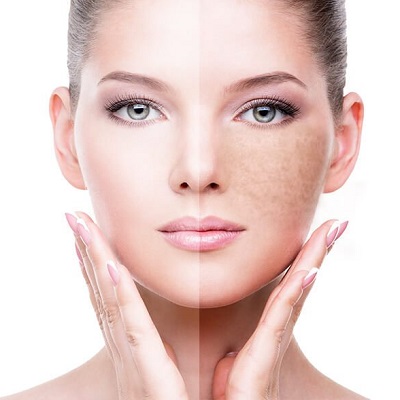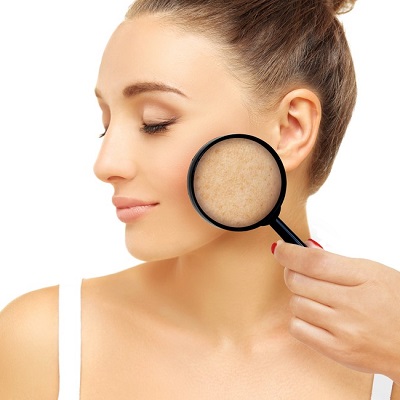
Hyperpigmented regions are skin spots that are darker than the surrounding skin. Moreover, it happens when the skin overproduces melanin, the pigment responsible for skin tone. However, it can occur on any skin type and is more common after an injury, in older age groups, or during pregnancy. In addition, hyperpigmentation is a generic word for several forms of skin darkening. Sun exposure, hormone fluctuations, certain medical disorders, heredity, and other factors can all function as triggers for this illness. Further, over-the-counter (OTC) or prescription topical drugs, as well as in-office skin resurfacing procedures, ae the treatment choice for some individuals with skin discoloration. It may also be possible to avoid hyperpigmentation if you know the possible causes.
Understanding Hyperpigmentation: Causes And Types:
Hyperpigmentation is a frequent skin condition that causes uneven skin tone by appearing as darkening areas or blotches. Even though it is usually innocuous, how it affects one’s appearance can make one want to find answers. Understanding hyperpigmentation’s causes and various forms is essential to treating the problem successfully.
Cases of Hyperpigmentation:
- UV Exposure: The main cause of hyperpigmentation is excessive sun exposure. Melanin is stimulated by UV rays, resulting in an uneven distribution and the development of black spots.
- Inflammation And Injury: Eczema and acne are inflammatory skin disorders that can lead to hyperpigmentation. Additionally, darker spots may remain after wounds or skin injuries, such as burns, throughout the healing process.
- Hormonal Changes: Hyperpigmentation can arise as a result of hormonal fluctuations, particularly during pregnancy (melasma) or as a result of birth control or hormone therapy.
- Hereditary Predisposition: Hyperpigmentation is more likely to occur in certain people due to hereditary factors. Additionally, some ethnic groups might be more vulnerable to particular pigmentation issues.
- Age: The cumulative impact of UV exposure and other contributing factors can cause an increase in abnormalities in skin pigmentation as skin ages.
Types of Hyperpigmentation:
- Age Spots or Sun Spots: Sunspots, often called age spots, are dark patches of skin that develop on exposed skin, usually the face, hands, and shoulders. They are most commonly caused by extended sun exposure.
- Post-inflammatory hyperpigmentation (PIH) is the term for dark spots or patches that remain after an inflammatory skin ailment or injury has healed.
- Melasma: Usually appearing on the cheeks, nose, and forehead, melasma is a common condition during pregnancy.
- Freckles: Sun exposure causes a type of hyperpigmentation that is often hereditary. They are particularly noticeable in those with pale skin.
Treatment Options for Hyperpigmentation:
- Topical Treatments: To brighten hyperpigmented areas, dermatologists recommend topical treatments with hydroquinone, retinoids, or kojic acid.
- Chemical Peels: Under a chemical peel, the skin is treated with a solution that gradually exfoliates and peels off. This method can lessen hyperpigmentation.
- Laser Therapy: By focusing on pigmented regions, certain laser treatments help to break down excess melanin and encourage a more equal skin tone.
- Microdermabrasion: This treatment includes removing the skin’s outermost layer to promote skin renewal and lessen hyperpigmentation.
How to Avoid Hyperpigmentation:
To prevent hyperpigmentation, use a broad-spectrum sunscreen with at least 30 SPF daily, even on cloudy days. Reduce sun exposure by seeking shelter during peak sun hours. Lifestyle changes, such as a balanced diet rich in vitamins, minerals, and antioxidants, avoiding harsh skin care procedures, and reducing alcohol and tobacco use, can also help reduce hyperpigmentation risk. These measures help protect skin from damage and prevent further hyperpigmentation.
See a Dermatologist for Hyperpigmentation Advice:
To identify the underlying reason and create a customized treatment strategy, speaking with a dermatologist is essential for anyone struggling with hyperpigmentation. Dermatologists are qualified to conduct a comprehensive skin examination, recognize particular forms of hyperpigmentation, and provide customized treatments.
You have the best dermatologists in the world in Islamabad. To consult with them, call or visit Dynamic Clinic Islamabad.
Conclusion:
Despite being widespread, hyperpigmentation is a complex skin condition influenced by several variables. Awareness of its sorts and reasons enables people to choose their skincare products with knowledge. While avoiding the sun and wearing protective gear might help prevent some types of hyperpigmentation, seeing a dermatologist guarantees a thorough course of therapy. Treating hyperpigmentation, whether with topical medications, chemical peels, or laser therapy, improves the skin’s look while fostering a glowing complexion and increased self-esteem. Accept the journey towards a more balanced skin tone, and seek expert advice on how to get there by speaking with a skincare specialist.

